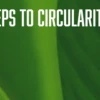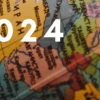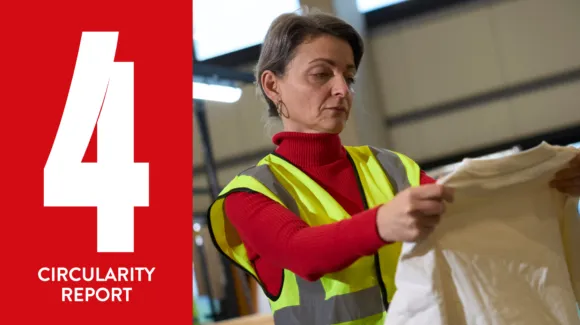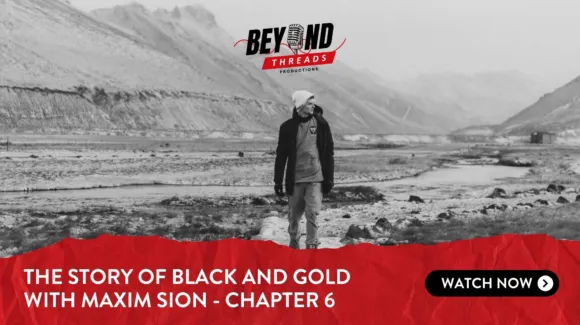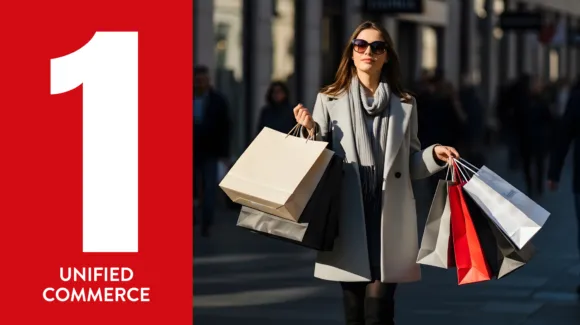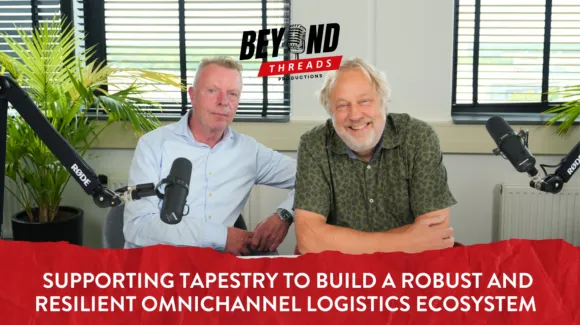For brands unfamiliar with circular business models, the transition to practices such as reuse, re-commerce and recycling can seem daunting. This is often due to misconceptions about the potential impact of circular business models on profitability, as well as the time and upfront investment required to implement circular solutions. But the success of Bleckmann’s plug-and-play RESCUE programme is proof that circular solutions don’t have to be costly or complicated. In this article, we’ll explore how services like RESCUE can provide a practical route to making your operations more cost-effective and accelerate your shift towards circularity.
What’s the difference between rescue and renewal?
While the terms ‘rescue’ and ‘renewal’ are often used interchangeably, they represent different processes within Bleckmann’s circular fashion ecosystem. ‘Rescuing’ garments refers to minor repairs that take minutes to complete, such as reattaching a button, cleaning a small stain or re-sewing a seam as part of the returns process. These small repairs restore the item to brand-new condition so that it can be returned to stock, ready for sale. In contrast, the ‘renewal’ process applies to more extensive repairs on returns or refurbishments carried out on pre-owned items to prepare them for resale.
Behind the scenes with the RESCUE programme
The RESCUE programme offers brands a pragmatic and accessible entry point into the circular ecosystem by addressing the financial and environmental costs of minor, defects as part of the returns process. Rather than treating these garments as being at their ‘end-of-life’, the RESCUE programme enables brands to make them saleable in the season for which they were designed. The simplicity and speed of our RESCUE programme make it attractive to brands as a cost-effective method of minimising waste and maximising the commercial value of their stock. So, how does the process work in practice?
The RESCUE system begins when garments returned to one of Bleckmann’s warehouses are deemed ‘damaged’ following a detailed returns inspection. The items are then further sorted to identify those suitable for repair. “Returned items are filtered into specific repair categories, ranging from minor stitching to button or zip replacement,” explains Reinout Denys, Renewal Project Manager at Bleckmann’s Renewal Workshop. “Repairs should take a few minutes, so we need to focus on items that are only slightly damaged or dirty. Any items that need more than a quick repair can become units for a resale programme.”
Once repaired, the garments are immediately returned to the brand’s inventory. This enables us to achieve the core objective of the RESCUE programme: to repair products with slight imperfections to brand-new condition so that they can be sold at full retail value, helping to protect the profitability of our brand partners. “In total, we process around 45,000 items a year through our RESCUE programme, and we’re able to restore 54% of these items to brand-new condition,” shares Reinout. “Every single item rescued saves money for the brands we work with and helps to reduce the total volume of garments that remain unsold – enabling brands to reduce their environmental impact.”
Building a business case for RESCUE
Thanks to our team of circular fashion experts at the Renewal Workshop, we’re able to collaborate with brands to help them develop a bespoke business case for using our RESCUE programme – providing clear insights into how many garments they are currently losing annually due to small, fixable repairs that are not being addressed. Through this analysis, we can demonstrate how much value these items represent and how much our brand partners can save by implementing RESCUE into their operations.
If damaged goods aren’t rescued, brands not only lose out on the full retail value of those items but also incur the additional cost of storing faulty stock in warehouses. “Most damaged but repairable items end up sitting in warehouses – often for months – costing brands storage fees before they are simply disposed of,” explains Reinout. “The RESCUE programme both preserves the commercial value of the products and reduces the financial burden of storing and disposing of unsaleable stock, offering brands a win-win solution in terms of profitability and sustainability.”
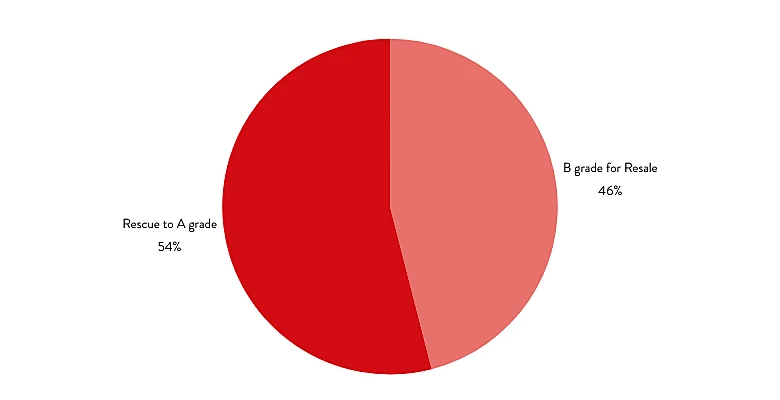

Figure 1: How much could implementing RESCUE save a typical brand?
Expanding RESCUE beyond apparel
While the RESCUE programme initially focused on apparel, we have since extended it to include a range of other fashion items, including accessories, footwear and luggage. “By diversifying our operations, we’ve been able to better align our RESCUE services with the evolving needs of brands and the increasing demand for sustainable practices across different product categories,” Reinout adds. “Thanks to our investment in new repair expertise and technical tools, we aim to further improve our efficiency and enable our repair operators to handle even larger volumes of items with speed and precision.”
RESCUE: A gateway to the circular fashion ecosystem?
Integrating RESCUE into a brand’s supply chain isn’t just a sustainable choice that makes good business sense – it’s also an opportunity for brands to see how pragmatic and effective circular solutions can be. By demonstrating that circularity can be impactful, profitable and affordable to implement, the RESCUE programme can encourage brands to explore a wider range of circular initiatives, such as recommerce or rental models – helping to pave the way for a fashion industry where waste is history.



